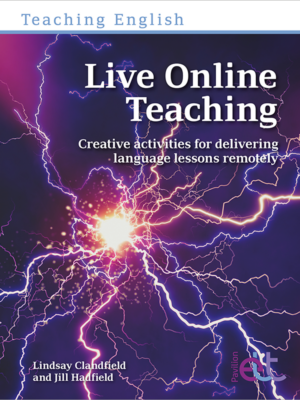Description
Emergent language (EL) is any unplanned language item that arises naturally during lessons that the teacher then chooses to focus on for clarification or modification, and this pedagogy is gaining traction year on year. It originally stemmed from Dogme, a popular movement that basically suggested not using coursebooks or set texts in class at all and working with what the students and the teacher themselves provide. Emergent language takes on board lessons learnt from using Dogme and current teaching practices. However, working with EL is considered a very difficult skill to master, especially for newer teachers or trainee teachers. Therefore, it is not often included on training courses or discussed at length in training manuals for teachers. Working with Emergent Language seeks to close this gap by making teachers more aware of what EL is and how they can learn to work with it more effectively and confidently.
What does Working with Emergent Language cover?
This book starts by drawing on the literature and the authors’ own experiences to make the case that working with EL is essential for language acquisition to occur and therefore a skill that language teachers should possess. The case is backed up by research and data from observations to explore how experienced teachers work with EL at different stages of a lesson and why they do so. To show how teachers work with EL, you will be introduced to a new framework of teacher intervention types. This draws on previous frameworks plus the authors’ own terms created following their extensive research. Transcripts and classroom commentaries from genuine lessons show how these interventions are used by teachers and why.
Part two of Working with Emergent Language provides awareness-raising, practice, and reflective tasks to help new and experienced teachers develop their skills with EL. Teacher trainers and educators can also use these tasks during courses, workshops, and observations programmes in schools. Through these tasks, new teachers will be able to work with EL earlier in their careers. Teacher educators can also more confidently introduce EL on their courses. Through the tasks and discussion in this section, you will learn why reflective practice is central to teacher education and development, and through the use of tasks explained in the book, teachers can also take control of their development much earlier in their careers.
The final part of the book addresses typical questions and issues about working with emergent language that teachers often ask. They dispel common conceptions suggesting that working with EL is difficult or inappropriate in some contexts and situations.
These questions include:
- ‘Can you work with EL with lower levels/teens/younger learners?’,
- ‘Is it difficult for teachers whose 1st language is not English to work with EL?’,
- ‘Can you work with EL in exam classes or when you are following a syllabus?’,
- ‘How can you work with EL when teaching online?’,
- ‘How might the 1st language be used when working with EL?’.
Working with Emergent Language is part of the Teaching English series, which offers practical methodology across a wide range of different topics. Danny Norrington-Davies is also the author of Teaching Grammar: From Rules to Reasons by Pavilion ELT.









Reviews
There are no reviews yet.